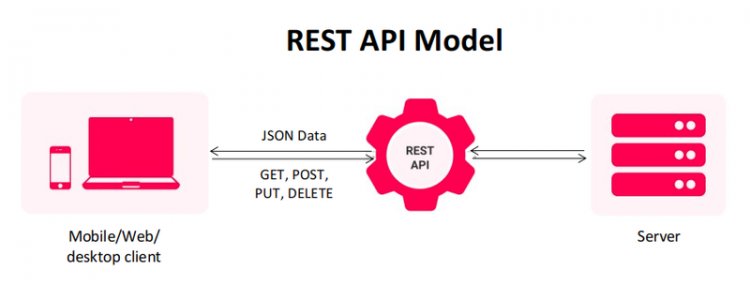Rest Web Services - Introduction

Rest Web Services - Introduction
In the vast landscape of web development, Rest Web Services have emerged as a fundamental component, playing a pivotal role in facilitating communication between different software systems over the internet. Understanding Rest Web Services is essential for developers, as they form the backbone of modern web applications. In this article, we will delve into the world of Rest Web Services, exploring what they are, how they work, and why they are crucial in today's digital era.
Table of Contents
- What are Rest Web Services?
- The History of Rest Web Services
- Key Principles of Rest
- Advantages of Rest Web Services
- How Rest Web Services Work
- HTTP Methods in Rest
- Data Formats in Rest
- Restful API Design Best Practices
- Implementing Rest Web Services
- Rest vs. SOAP: A Comparison
- Security Considerations in Rest Web Services
- Rest Web Services in Practice
- Challenges and Limitations
- The Future of Rest Web Services
- Conclusion
1. What are Rest Web Services?
Rest, which stands for Representational State Transfer, is an architectural style for designing networked applications. Rest Web Services, often simply referred to as Rest APIs, are a set of rules and conventions that allow different software applications to communicate with each other over the World Wide Web. These services are built on the principles of simplicity, scalability, and ease of use.
A web service is a set of open protocols and standards used to exchange data between applications or systems. Software applications written in different programming languages and running on different platforms can use web services to communicate over computer networks such as the Internet, similar to inter-process communication on a single computer. This compatibility (for example, between Java and Python applications, or Windows and Linux) is due to the use of open standards.
Web services based on REST architecture are known as RESTful web services. These web services use HTTP methods to implement the REST architecture concept. A RESTful web service typically defines a URI, the service's Uniform Resource Identifier, provides a resource representation such as JSON, and a set of HTTP methods.
2. The History of Rest Web Services
The concept of Rest Web Services was introduced by Roy Fielding in his doctoral dissertation in 2000. Fielding's work laid the foundation for the Rest architectural style, which has since gained widespread adoption in web development.
3. Key Principles of Rest
Rest Web Services are guided by several key principles, including statelessness, client-server architecture, and the use of standard HTTP methods. These principles ensure that Rest APIs are easy to understand and can be used in a wide range of applications.
4. Advantages of Rest Web Services
Rest Web Services offer numerous advantages, such as simplicity, scalability, and platform independence. They are also known for their flexibility and compatibility with various data formats.
5. How Rest Web Services Work
Rest Web Services operate by using HTTP methods to perform CRUD (Create, Read, Update, Delete) operations on resources. These resources can represent data, objects, or services.
6. HTTP Methods in Rest
Rest APIs make use of standard HTTP methods, including GET, POST, PUT, DELETE, and more. Each method has a specific purpose and corresponds to a CRUD operation.
HTTP Methods
The following four HTTP methods are commonly used in a REST-based architecture.
-
GET - Provides read-only access to a resource.
-
POST - used to create a new resource.
-
DELETE - used to delete a resource.
-
PUT - used to update an existing resource or create a new resource.
GET - Provides read-only access to a resource.
POST - used to create a new resource.
DELETE - used to delete a resource.
PUT - used to update an existing resource or create a new resource.
7. Data Formats in Rest
Rest Web Services can exchange data in various formats, such as JSON and XML. This flexibility makes it easy for different systems to understand and process the information.
8. Restful API Design Best Practices
Designing a Restful API requires careful consideration of best practices, including resource naming, versioning, and error handling. Following these practices ensures that your API is user-friendly and maintainable.
9. Implementing Rest Web Services
Developers can implement Rest Web Services using a variety of programming languages and frameworks. Popular choices include Node.js, Python's Flask, and Java's Spring Boot.
10. Rest vs. SOAP: A Comparison
Rest Web Services are often compared to SOAP (Simple Object Access Protocol) services. We will explore the differences between these two approaches and why Rest has gained more popularity in recent years.
11. Security Considerations in Rest Web Services
Ensuring the security of Rest APIs is crucial to protect sensitive data and prevent unauthorized access. We will discuss common security practices and authentication methods used in Rest Web Services.
12. Rest Web Services in Practice
To illustrate the practical application of Rest Web Services, we will explore a real-world example, such as building a weather forecasting API.
13. Challenges and Limitations
While Rest Web Services offer many advantages, they also face challenges, such as handling large volumes of data and ensuring backward compatibility.
14. The Future of Rest Web Services
As technology continues to evolve, Rest Web Services are likely to play a central role in the development of web applications and the Internet of Things (IoT).
15. Conclusion
In conclusion, Rest Web Services are a cornerstone of modern web development, enabling seamless communication between diverse software systems. Understanding the principles, advantages, and best practices of Rest is essential for developers and businesses looking to thrive in the digital age.
FAQs
-
What is the primary advantage of Rest Web Services?
- The primary advantage of Rest Web Services is their simplicity and scalability, making them easy to use and suitable for a wide range of applications.
-
How do Rest Web Services differ from SOAP services?
- Rest Web Services differ from SOAP services in their architectural style, simplicity, and use of standard HTTP methods.
-
What are the key principles of Rest Web Services?
- Key principles of Rest Web Services include statelessness, client-server architecture, and the use of standard HTTP methods.
-
What programming languages are commonly used to implement Rest Web Services?
- Popular programming languages for implementing Rest Web Services include Node.js, Python, and Java.
-
What are the security considerations for Rest Web Services?
- Security considerations for Rest Web Services include authentication, authorization, and protection against common vulnerabilities.

 user-pcr
user-pcr 














